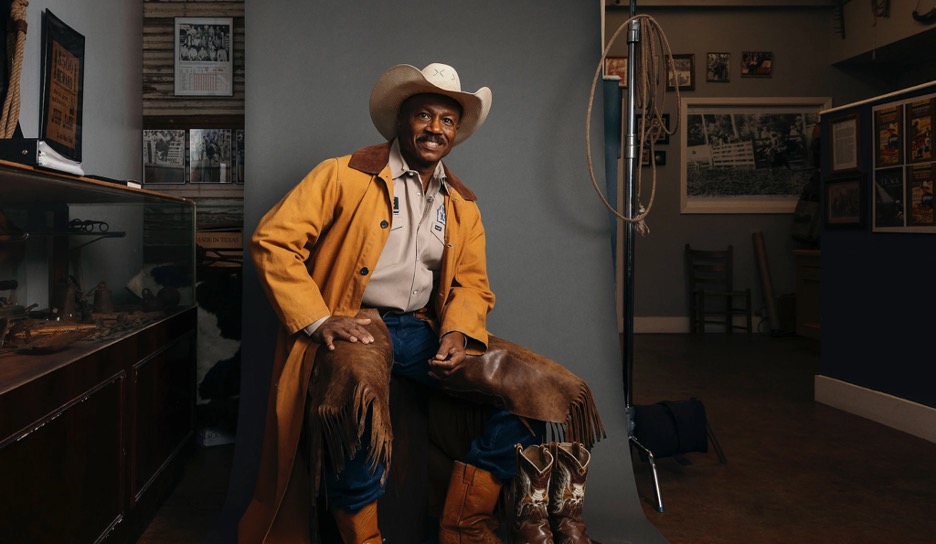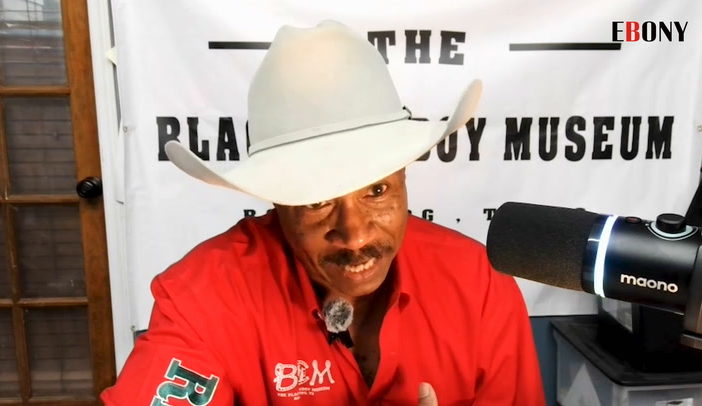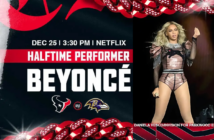With the resurgence of cowboy culture in film, fashion and music, tracing and retaining its roots has become key to its preservation.
The “Yeehaw Agenda“—a term first coined by a social media user Bri Malandro—continually sparked pop cultural explosions like Lil Nas X’s “Uptown Road” and skyrocketed Beyoncé’s Cowboy Carter. This movement linked Black people once again to cowboy culture and its traditions. Still, it remains widely associated with White American traditions.
Larry Callies, owner and manager of The Black Cowboy Museum in Rosenberg, Texas, is a fourth-generation cowboy. Through his own lineage, Callies discovered that since its inception, there’s been an interdependence between cowboy culture and our community. Vocal dysphonia, the end of a country singing career and a message from God led him to capture this truth in a museum experience. Now, museum-goers who’ve traveled far and wide get to learn the truth: cowboy culture is Black history, and Black history is American history.
Singer and activist Nina Simone once said, “An artist’s duty, as far as I’m concerned, is to reflect the times.” The decision by Black artists to embrace cowboy culture and its traditions embodies just that. This current moment’s recognition of Black cowboy culture feels especially timely as there still seems to be external confusion on what we can rightfully call our own. So, Pharrell Williams’ Louis Vuitton Fall-Winter ‘24 collection linking Blackness to American Western fashion and other demonstrations are not only examples of resurgence but resilience. When asked how Callies feels about the resurgence and its impact on the museum, he said, “Well I was the one who impacted them.” The singer-historian recalls taking meetings with production companies and artists that led to the development of cowboy culture’s biggest moments over the last several years. He shared with them the names of his heroes like Bass Reeves, Nat Love, Bill Pickett, and Stagecoach Mary. Callies reminiscences on how his own history inspired him to learn about our history as a people.
“My dad played guitar. My grandpa told me his dad played guitar. And they all sang.” At 12 years old, he learned to play “Milk Cow Blues,” a blues song written and originally recorded by Kokomo Arnold in 1934 and later popularized and remade by other White artists such as Elvis Presley. By this time, Callies was watching the men in his family tend to cattle and began taking on all the responsibilities of a cowboy. He was then taught by Black cowboys where the word cowboy came from: “… right here in Fort Bend County, Warden County…all the surrounding counties of Houston. That’s where the term came from in 1821. They brought slaves over here and had them working cows and they had them working in the house and in the yard. They called the one that worked in the house, ‘a house boy,’ the one that worked in the yard, ‘a yard boy,’ and the one that worked the cows, ‘a cowboy,’ but Hollywood heard about it and they didn’t know where this word came from. The word cowboy actually came from that, ‘a house nigga,’ ‘a yard nigga,’ and a ‘nigga that worked the cows.’ Then they changed it. House boy, yard boy and a cowboy. Now, that’s where the word really came from.”
 Larry Callies. Image: The Black Cowboy Museum.
Larry Callies. Image: The Black Cowboy Museum.
Storytelling has proven to be a thread in the life and career of Callies: From the “Milk Cow Blues ”and cowboyhood to country singing and opening a museum where he gets to keep the origin story of cowboy culture alive.
Callies acknowledges it’s only after stepping out on faith that everything started happening. “People started donating to my museum. I filled my museum up in one year. Now, I have to move to a new museum. It’s going to be six times as big. And it’s really taking off.” Over the last 20 years Callies has collected artifacts dating back to the 1200s. His museum has attracted fellow historians and lovers of cowboy culture from Germany, Spain, and the Philippines.
When asked about the root interest of most visitors, he said, “You know, people don’t know where they came from. They don’t know what people are doing in this country because they don’t know their history…if we don’t learn our history, [we’re] bound to repeat it.”



